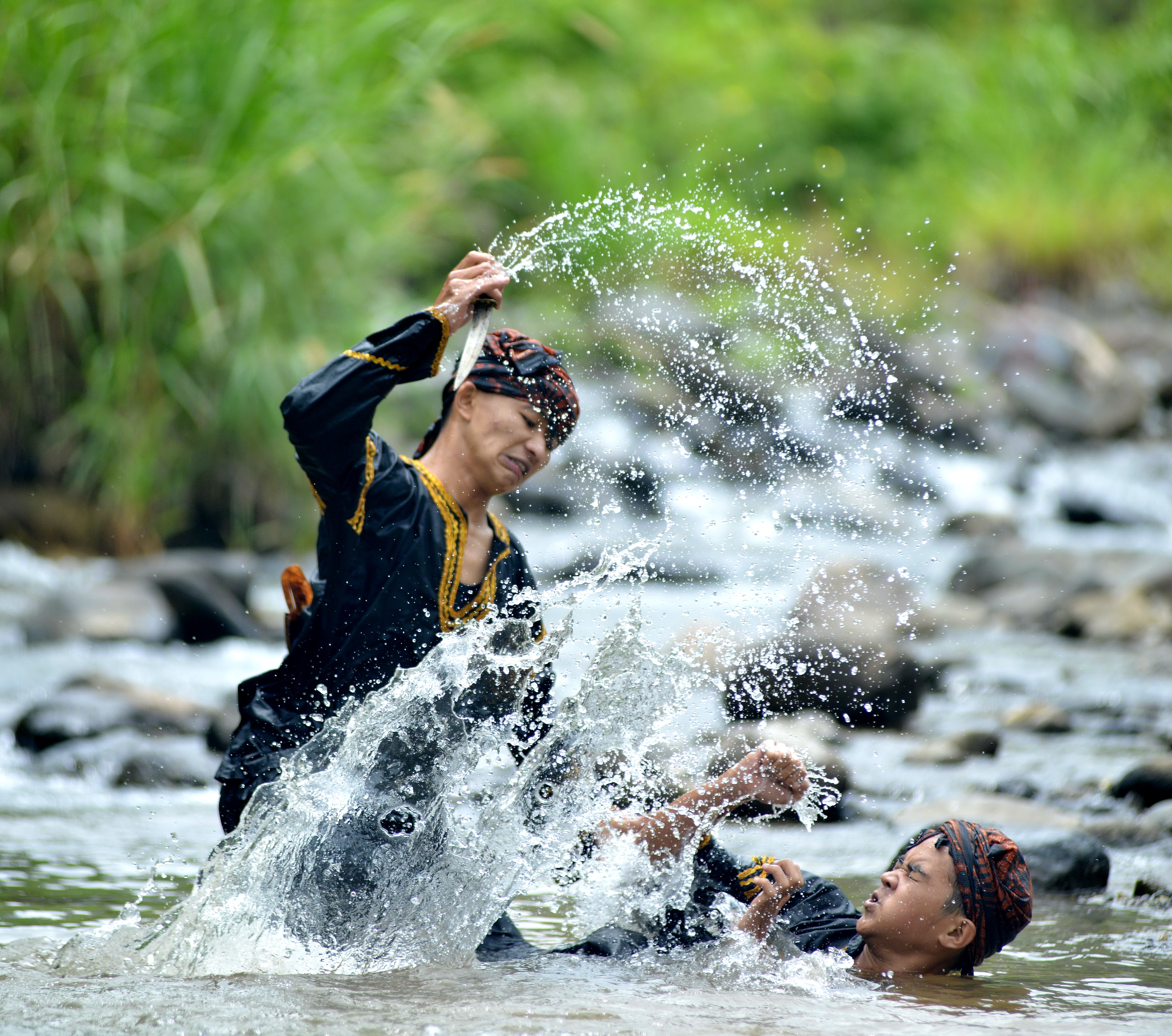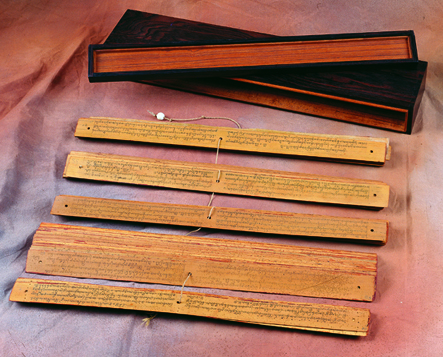|
Footwork (martial Arts)
Footwork is a martial arts and combat sports term for the general usage of the legs and feet in stand-up fighting. Footwork involves keeping balance, closing or furthering the distance, controlling spatial positioning, and/or creating additional momentum for strikes. Basic incarnations of footwork Boxing footwork The characteristic footwork employed by most of the world's major boxing and kickboxing styles, such as Western boxing and Muay Thai, has changed little over the centuries, and has remained largely invariable between radically different cultures. The boxer relies on 'push stepping'. In which the leading leg advances first, then the rear, with the feet coming to rest in the exact relative position. Rear movement is a reversal of this step, and lateral movement involves push stepping in the same fashion, with the foot closest to the desired direction stepping laterally, followed by the opposite foot, which is used to move the body. For the pugilist, footwork is to b ... [...More Info...] [...Related Items...] OR: [Wikipedia] [Google] [Baidu] |
Wing Chun
Wing Chun (Cantonese) or Yong Chun (Mandarin Chinese, Mandarin) (, lit. "singing spring") is a concept-based martial art, a form of Nanquan (martial art), Southern Chinese kung fu, and a close-quarters system of self-defense. It is a martial arts style characterized by its focus on close-quarters hand-to-hand combat, rapid-fire punches, and straightforward efficiency. It has a philosophy that emphasizes capturing and sticking to an opponent's centerline. This is accomplished using simultaneous attack and defense, tactile sensitivity, and using an opponent's force against them. Wing Chun has various spellings in the West, but "Wing Chun" is the most common. The origins of Wing Chun are uncertain, but it is generally attributed to the development of Southern Chinese martial arts. There are at least eight distinct lineages, of which the Ip Man and Yuen Kay-shan lineages are the most prolific. The martial art was brought to Hong Kong and then the rest of the world by Ip Man, with ... [...More Info...] [...Related Items...] OR: [Wikipedia] [Google] [Baidu] |
Baguazhang
''Baguazhang'' () is one of the three main Chinese martial arts of the '' Wudang'' school, the other two being tai chi and '' xingyiquan''. It is more broadly grouped as an internal practice (or ''neijia''). ''Baguazhang'' literally means "eight trigram palm", referring to the ''bagua'' "trigrams" of the ''I Ching'', one of the canons of Taoism. History The creation of ''baguazhang'' as a formalized martial art is attributed to Dong Haichuan, who is said to have learned it from Taoist and Buddhist masters in the mountains of rural China during the early 19th century. Many Chinese authorities do not accept the Buddhist origin, instead maintaining that those teachers were purely Taoist in origin, the evidence lying in ''baguazhangs frequent reference to core concepts central to Taoism, such as yin and yang theory, ''I Ching'', and Taoism's most distinctive paradigm, the ''bagua'' diagram. The attribution to Buddhist teachers came from the second generation teachers, i.e. Dong Hai ... [...More Info...] [...Related Items...] OR: [Wikipedia] [Google] [Baidu] |
Panantukan
Suntukan is the fist-related striking component of Filipino martial arts. In the central Philippine island region of Visayas, it is known as Pangamot or Pakamot and Sumbagay. It is also known as Mano-mano and often referred to in Western martial arts circles of Inosanto lineage as Panantukan. Although it is also called Filipino Boxing, this article pertains to the Filipino martial art and should not be confused with the Western sport of boxing as practiced in the Philippines. Etymology The term ''suntukan'' comes from the Tagalog word for punch, ''suntok''. It is the general Filipino term for a fistfight, brawl, or boxing regardless whether the involved had background in martial arts or not as in '' "suntukan sa Ace hardware"'' ("brawl at Ace hardware"). The Visayan terms (also found in Waray and Hiligaynon entries) ''pangamot'' and ''pakamot'' come from the word for hand, "''kamót",'' the word ''pangamot'' is also used to refer to anything done by hand, making it a ... [...More Info...] [...Related Items...] OR: [Wikipedia] [Google] [Baidu] |
Kuntao
Kuntao or kuntau (, ) is a Min Nan, Hokkien term for the martial arts of the Chinese community of Southeast Asia, specifically the Malay Archipelago. It is most commonly practiced in and associated with Indonesia, Malaysia, the Philippines and Singapore. Etymology There are no standard hanzi for kuntao, but the most common reading is "way of the fist", from ''kun'' 拳 meaning fist and ''tao'' 道 meaning way. Less common readings may use the character ''kun'' 棍 meaning staff, or ''tou'' 头 meaning head, so that it could be translated as "way of the staff" or roughly "knowledge of fists". In Fujian and other southern areas, this term was originally used for Chinese martial arts in general and was synonymous with ''quanfa'' (拳法, Pe̍h-ōe-jī: kûn-hoat). The word is recorded in Classical Malay and Indonesian language, Indonesian, making it the oldest known term for Chinese martial arts in those languages, before the modern adoption of the term ''kungfu''. In English, and e ... [...More Info...] [...Related Items...] OR: [Wikipedia] [Google] [Baidu] |
Silat
Silat is the collective term for a class of martial arts from the Nusantara and surrounding geocultural areas of Southeast Asia. It is traditionally practised in Brunei, Indonesia, Malaysia, Singapore, Southern Thailand, Southern Philippines and Southern Vietnam. There are hundreds of different styles (''aliran'') and schools (''perguruan'') which tend to focus either on strikes, joint manipulation, weaponry, or some combination thereof. The word ''silat'' is used by Malay speakers throughout Southeast Asia, but it is officially called ''pencak silat'' in Indonesia. The term ''pencak silat'' has been adopted globally in reference to professional competitive silat for sport, similar to the Chinese word ''wushu''. Regional dialect names include ''penca'' (West Java), ''dika'' or ''padik'' (Thailand), ''silek'' (the Minangkabau pronunciation of silat), ''main-po'' or ''maen po'' (in the lower speech of Sundanese), and ''gayong'' or ''gayung'' (used in parts of Malaysia a ... [...More Info...] [...Related Items...] OR: [Wikipedia] [Google] [Baidu] |
Escrima
Arnis, also known as kali or eskrima/escrima, is the national martial art of the Philippines. These three terms are, sometimes, interchangeable in referring to traditional martial arts of the Philippines (" Filipino Martial Arts", or FMA), which emphasize weapon-based fighting with sticks, knives, bladed weapons, and various improvised weapons, as well as "open hand" techniques without weapons. There were campaigns for arnis along with other Philippine martial arts to be nominated in the UNESCO Intangible Cultural Heritage Lists; and as of 2018, UNESCO has inscribed nine martial-arts-related intangible heritages. Name Arnis comes from ''arnés'', the Old Spanish for "armour" (''harness'' is an archaic English term from same root). It is said to derive from the armour costumes used in traditional '' Moro-moro'' stage plays, where actors fought mock battles with wooden swords. ''Arnes'' is also an archaic Spanish term for weapon, used as early as 1712. Eskrima (also spell ... [...More Info...] [...Related Items...] OR: [Wikipedia] [Google] [Baidu] |
Philippines
The Philippines, officially the Republic of the Philippines, is an Archipelagic state, archipelagic country in Southeast Asia. Located in the western Pacific Ocean, it consists of List of islands of the Philippines, 7,641 islands, with a total area of roughly 300,000 square kilometers, which are broadly categorized in Island groups of the Philippines, three main geographical divisions from north to south: Luzon, Visayas, and Mindanao. With a population of over 110 million, it is the world's List of countries and dependencies by population, twelfth-most-populous country. The Philippines is bounded by the South China Sea to the west, the Philippine Sea to the east, and the Celebes Sea to the south. It shares maritime borders with Taiwan to the north, Japan to the northeast, Palau to the east and southeast, Indonesia to the south, Malaysia to the southwest, Vietnam to the west, and China to the northwest. It has Ethnic groups in the Philippines, diverse ethnicities and Culture o ... [...More Info...] [...Related Items...] OR: [Wikipedia] [Google] [Baidu] |
Indonesia
Indonesia, officially the Republic of Indonesia, is a country in Southeast Asia and Oceania, between the Indian Ocean, Indian and Pacific Ocean, Pacific oceans. Comprising over List of islands of Indonesia, 17,000 islands, including Sumatra, Java, Sulawesi, and parts of Borneo and New Guinea, Indonesia is the world's largest archipelagic state and the List of countries and dependencies by area, 14th-largest country by area, at . With over 280 million people, Indonesia is the world's List of countries and dependencies by population, fourth-most-populous country and the most populous Islam by country, Muslim-majority country. Java, the world's List of islands by population, most populous island, is home to more than half of the country's population. Indonesia operates as a Presidential system, presidential republic with an elected People's Consultative Assembly, legislature and consists of Provinces of Indonesia, 38 provinces, nine of which have Autonomous administrative divisi ... [...More Info...] [...Related Items...] OR: [Wikipedia] [Google] [Baidu] |
Malaysia
Malaysia is a country in Southeast Asia. Featuring the Tanjung Piai, southernmost point of continental Eurasia, it is a federation, federal constitutional monarchy consisting of States and federal territories of Malaysia, 13 states and three federal territories, separated by the South China Sea into two regions: Peninsular Malaysia on the Mainland Southeast Asia, Indochinese Peninsula and East Malaysia on the island of Borneo. Peninsular Malaysia shares land and maritime Malaysia–Thailand border, borders with Thailand, as well as maritime borders with Singapore, Vietnam, and Indonesia; East Malaysia shares land borders with Brunei and Indonesia, and a maritime border with the Philippines and Vietnam. Kuala Lumpur is the country's national capital, List of cities and towns in Malaysia by population, largest city, and the seat of the Parliament of Malaysia, legislative branch of the Government of Malaysia, federal government, while Putrajaya is the federal administrative capi ... [...More Info...] [...Related Items...] OR: [Wikipedia] [Google] [Baidu] |
Majapahit Empire
Majapahit (; (eastern and central dialect) or (western dialect)), also known as Wilwatikta (; ), was a Javanese Hindu-Buddhist thalassocratic empire in Southeast Asia based on the island of Java (in modern-day Indonesia). At its greatest extent, following significant military expansions, the territory of the empire and its tributary states covered almost the entire Nusantara archipelago, spanning both Asia and Oceania. After a civil war that weakened control over the vassal states, the empire slowly declined before collapsing in 1527 due to an invasion by the Sultanate of Demak. The fall of Majapahit saw the rise of Islamic kingdoms in Java. Established by Raden Wijaya in 1292, Majapahit rose to power after the Mongol invasion of Java and reached its peak during the era of the queen Tribhuvana and her son Hayam Wuruk, whose reigns in the mid-14th century were marked by conquests that extended throughout Southeast Asia. This achievement is also credited to the famous ... [...More Info...] [...Related Items...] OR: [Wikipedia] [Google] [Baidu] |
Chin Na
Qin Na () is the set of joint lock techniques used in the Chinese martial arts to control or lock an opponent's joints or muscles/tendons so they cannot move, thus neutralizing the opponent's fighting ability. ''Qin Na Shu'' ( meaning "technique") literally translates as ''lock catch technique''. Some schools simply use the word ''na'' ("hold") to describe the techniques. Qinna features both standing and ground-based grappling techniques. Some Chinese martial arts instructors focus more on their ''Qin Na'' techniques than others. This is one of the many reasons why the ''qinna'' of one school may differ from that of another. All martial arts contain ''qinna'' techniques in some degree. The southern Chinese martial arts have more developed ''Qin Na'' techniques than northern Chinese martial systems. The southern martial arts have much more prevalent reliance on hand techniques which causes the practitioner to be in closer range to their opponent. There are over 700 ''Qin Na'' tr ... [...More Info...] [...Related Items...] OR: [Wikipedia] [Google] [Baidu] |





